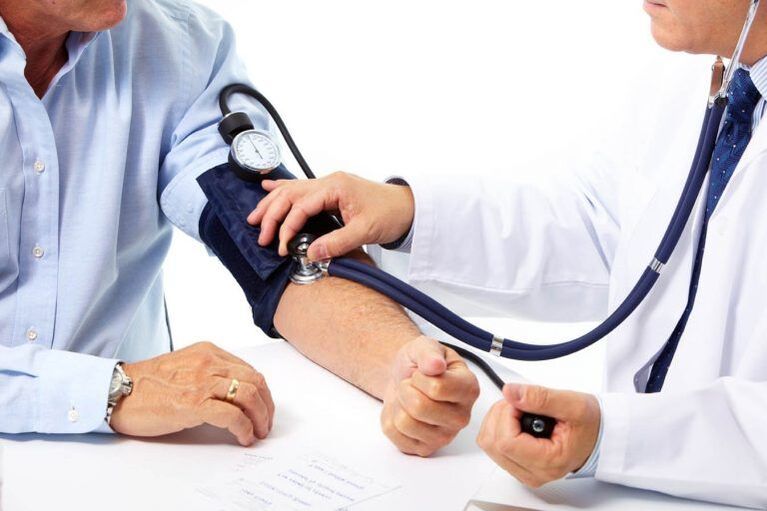
Hypertonic disease is the most common disease of the circulatory system all over the world. About 30% of the world's population suffer from this disease. In recent years, a significant "rejuvenation" of the disease has been determined - for the sick, more and more people in middle age.
Hyperture is full of strong, disabled complications and often leads to death. At the same time, the occurrence and development of the disease can be delayed after years after years after years. Each person should be familiar with the risk factors for the development of high blood pressure, their symptoms and treatment principles.
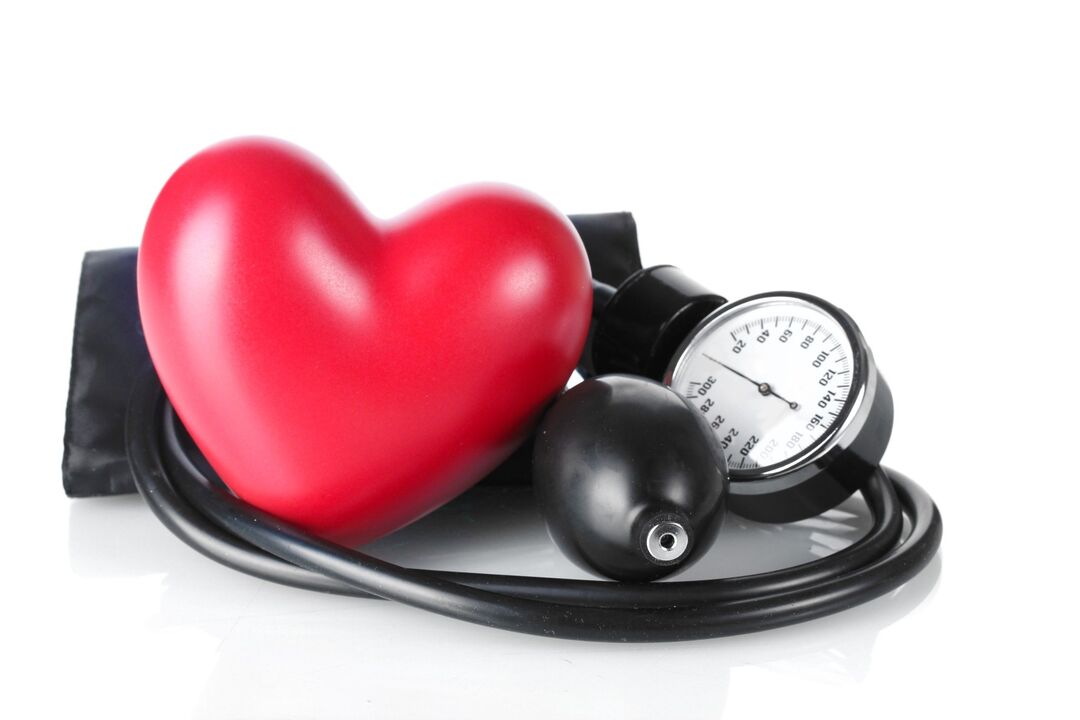
What is high blood pressure?
Hypertonic disease or arterial hypertension (synonymous: essential hypertension, primary hypertension) - chronic procedure, susceptible to the progression, in the clinical image, of which the leading symptom is a persistent, longer increase in blood pressure (i. e. arterial hypertension syndrome).
The criteria for arterial hypertension are viewed as systolic blood pressure (blood pressure) from above or 140 mm Hg. Art. and/or diastolic blood pressure of more than 90 mm ed. Art.
Etiology of the disease
Hypertonic disease is regarded as an idiopathic illness, the immediate causes of their occurrence are not determined.
Classic neurogenic theory is most widespread under the numerous theories of the development and development of primary hypertension. This concept sees high blood pressure as a neurotic state of a higher nervous activity. The starting mechanism is considered a nervous overvoltage (acute or extended, chronic), which leads to a violation of the trophism of the structures of the brain, which are responsible for regulating blood pressure. Of particular importance are emotions that have not received implementation in the engine area, the so -called "non -implemented emotions".
A genetic predisposition is pursued in the occurrence of primary hypertension. The family nature of the disease is observed in 35-50% of the people suffering from high blood pressure. A specific gene, the defect of which would lead to a continued increase in blood pressure, was not found. The disease probably has a polygenic type of inheritance.
Pathogenesis of high blood pressure
The pathogenesis of primary hypertension is complicated and in different stages it has its own properties. According to the neurogenic theory, the inhibitory effect of the cortex of the large hemispheres of the brain is reduced to subcortical (hypothalamic) vegetative centers, which causes the activation of the sympathetic system of pressure (vasoconstrictor). There is an adrenaline emission, a heart output, the arteries are narrowed (including kidneys), blood pressure increases. The cramp of the renal arteries activates another powerful pressing system-renin-angiotensin-balance, which makes its significant contribution to increasing blood pressure. Other vasoconstrictive active ingredients are also connected over time - anti -dietic hormone, prostacilla, endotheline, thromboxan. They are rejected by depressor systems-vascular prostaglandins, Kallikrein-Kinin and a system of sodium reinders. A long cramp of the arteries leads to a violation of the function of its inner shell (endothelium), which restructured the walls of blood vessels and has an effect on the development of atherosclerosis.
Risk factors
The risk factors are attributed to signs, whereby the presence in humans increases the likelihood of developing the disease. The variety of risk factors for primary hypertension is divided into two groups - modified and unmodified.
Unmodified risk factors (it is impossible to influence them)))
This includes:
- The male gender is higher among men of the middle -aged of young people of high blood pressure than in women. A low incidence in women is explained by the protective effect of estrogen. The prevalence of high blood pressure in representatives of both sexes older than 60 years is approximately the same;
- Age (more than 50-60 years)-the prevalence of high blood pressure increases significantly in old age;
- Inheritance - the presence of essential hypertension in a family increases the risk of the disease.
Modified risk factors (reserved influence)
This includes:
- Smoking - Nicotine has a strong vasoconstrictor effect. Active and passive smoking lead to cramps of blood vessels, increased blood pressure;
- Obesity - d. H. The body weight index is over 30 kg/m2. Clinical studies prove that the incidence of high blood pressure increases with increasing human weight. The deposition of the subcutaneous fat in the waist area (abdominal fat loophiness) is particularly dangerous because it is associated with an extremely high risk of primary hypertension. This is due to the stimulation of the sympathetic adrenal system in fat people. A waist over 80 cm for women and over 94 cm for men is a serious risk factor for high blood pressure.
- A sedentary lifestyle (hypodynamy) - inadequate physical activity provokes the development of obesity;
- Excess of table salt with food (over 5 g per day);
- excessive drinking (over 30 g ethyl alcohol per day);
- Incredible diet (high calorie with a surplus of saturated fats) - provokes obesity;
- Stress situations.
Classification of arterial hypertension
The primary hypertension is classified according to the type of target organs according to the type of lesion of target organs.
Classification of arterial hypertension (AG)
Category of systolic blood pressure, mm ed. Art. Diastolic blood pressure, mm ed. Art.
- Arterial hypertension i grade 140-159 90-99
- Arterial hypertension of the II degree 160-179 100-109
- Arterial hypertension of the III degree ≥ 180 ≥110
Classification through the type of defeat of target organs
Mishenic organs are referred to as organs in which pathological changes are mainly due to high blood pressure. For primary hypertension, the targets are heart, kidneys, brain, mesh shell of the eye, blood vessels.
3 stages of primary high blood pressure
It is common to distinguish 3 levels of primary hypertension:
Level I-Charcted by the lack of changes from the target organs;
Level II-There are changes in target organs that do not manifest themselves through symptoms:
- Heart: an increase in the left ventricular (according to the results of the EKG or ultrasound of the heart);
- Ships:Signs of thickening of the walls, the presence of plaques (according to the results of ultrasound, angiography);
- Kidney:Acceptance of the function, microalbuminuria (proof of small protein parts in the urine);
- The retina: Narrowing, impregnation of blood vessels;
Level III-S are symptoms of changes to the target organs:
- Heart: Ischemic disease, heart failure;
- Brain: temporary disorder of cerebral blood flow, stroke;
- Kidney:Kidney failure;
- Ships: Occlusion of the peripheral blood vessel that delays the aortic aneurysm;
- Rooms of the eye:Edema, bleeding, exudate.
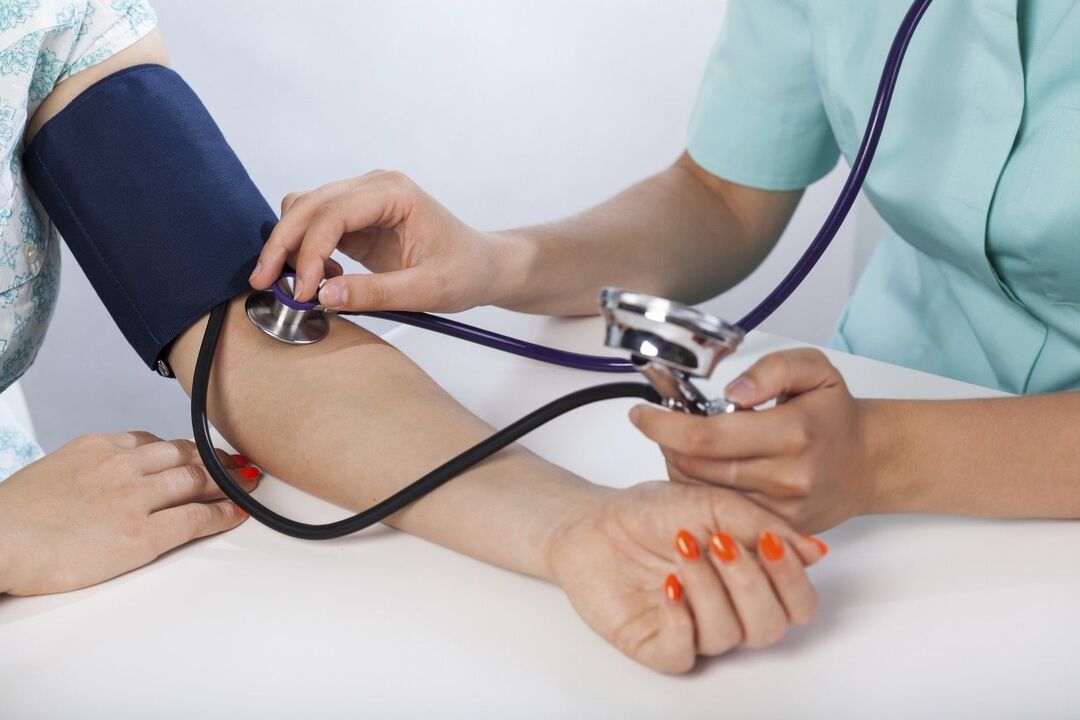
Symptoms of high blood pressure
In some cases, the only symptom of essential hypertension remains an increase in blood pressure. It can be accompanied by non -specific symptoms of headaches (in the morning by the type of "heavy head" with localization in the occipital region), irritability, excessive fatigue, sleep disorders, general weakness, dizziness and fast palpitations.
Hypertonic crises are considered a bright sign of disease cladding (from 1 to 2 hours to 2 to 3 days) of the deterioration of the disease, which is manifested by a sudden increase in blood pressure. They appear in about a third of the patients.
There are 2 types of crises for high blood pressure: first order (adrenal glands) and second order (noradrenaline).
The first hypertensive crisis develops more frequently in people with medium times. The rise of blood pressure occurs at night, accompanied by headaches, chills, cooling of the extremities, anxiety, anxiety, a quick heartbeat.
A second hypertensive crisis characteristic of older people. The increase in blood pressure is accompanied by a pronounced headache, an impaired visual perception, inhibition, sleepiness, nausea, vomiting.
With longer experience of high blood pressure in the clinical picture, the main town is occupied by the symptoms of diseases of the target organs: lag pain with angina pectorus, shortness of breath, swelling with heart failure, symptoms of a stroke, etc.
Diagnosis of high blood pressure
In order to diagnose hypertension to a person, it is necessary to identify a continued increase in blood pressure and to exclude the presence of other diseases characterized by arterial hypertension syndrome.
An increase in blood pressure is determined using a conventional tonic - hell is measured by a doctor or patient itself. An indispensable disease is to adhere to the method to measure blood pressure. The blood pressure mirror over or 140/90 mm ed. Art. He speaks of suspicion of essential high blood pressure. In diagnostically complex cases, the methodology of daily monitoring of blood pressure is used.
Diseases associated with high blood pressure
In Addition to Hypertension, there are still a Number of Diseases Accompanied by an increate in Blood Pressure: Kidney Pathology (Chronic Pyelo/Glomerulonephritis), Vasteral Hypertension (Caused by Narrowing of the Renal Artery), Adrenal Tumor-Pheochromocytoma, Aortic Coarctation (Congenital Defect of the Vessel), Endocrine Disorders (Conn syndrome, disease syndrome, illness. In order to exclude the presence of these pathologies, the doctor describes a comprehensive examination.
An additional investigation aims to recognize pathologies from target organs. You can clarify the phase of high blood pressure and prescribe adequate treatment.
The diagnostic measures include:
- EKG: There can be signs of an increase in the left ventricular (hypertrophy), ischemic changes, signs of acute myocardial infarction.
- X -Ray of the breast organs: changes in the contour of the heart (manifestation of the hypertrophy of the left ventricular) can be determined;
- Echocardiography (ultrasound of the heart): can be demonstrated by hypertrophy of the left ventricle, expansion of the heart caves;
- Investigation of the fund: The narrowed arteries of the retina, expanded veins, in the later stages - bleeding, exudates, swelling are determined;
- Blood testing: the amount of cholesterol, the indicators of the kidneys (creatinine, urea) are determined;
- Urine analysis: Diseases on how the kidneys, microalbuminuria, etc. are demonstrated.
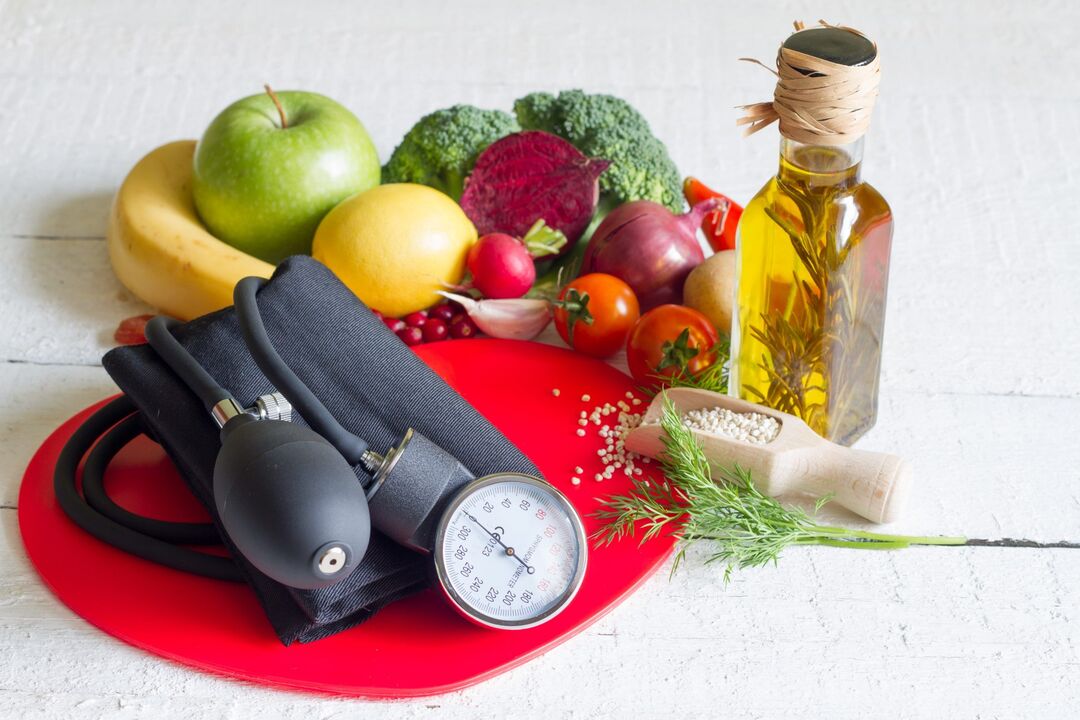
Treatment of high blood pressure
In the treatment of primary hypertension, non -angry and drug methods are successfully used, which complement each other.
Not -drug methods for the treatment of arterial hypertension
You are prescribed absolutely all patients with high blood pressure, even if a person receives medication to control blood pressure. These measures imply the removal of risk factors by changing the established lifestyle and human habits. Scientists have proven that in certain cases the treatment of non -disrupted treatment with medicinal products is not inferior.
The main instructions:
- Limitation of the amount of table salt that comes from food (up to 5-6 g a day). This implies a complete rejection of food such as sausages, sausages, salted cheese, canned food and salted fish. It should also be taken into account that there is a considerable amount of salt in baked goods products.
- The fight against overweight - people who suffer from primary high blood pressure is recommended to reduce the calorie content of food diet by limiting the use of fats.
- Restriction of the use of alcohol -containing drinks - up to 30 g ethyl alcohol per day;
- A complete and strict rejection of smoking-Wenn is necessary, fall back on the help of a narcologist;
- Regular physical activity is moderate, preferably daily and lasts at least half an hour. Events in the fresh air are preferred: jogging, going at an accelerated pace, cycling.
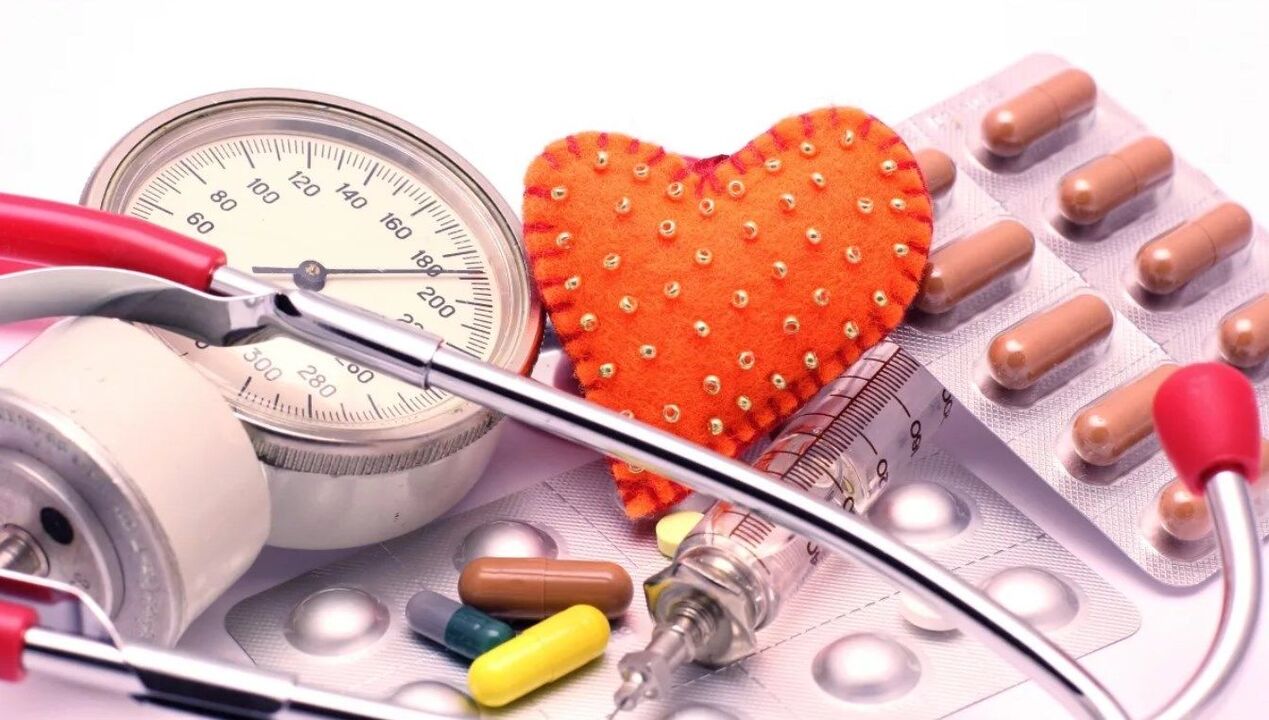
Drug treatment of arterial hypertension
Implies the use of drugs.
For effective treatment of primary hypertension, experts recommend several drug classes that reduce blood pressure and influence different stages of the pathogenesis of the disease.
Main classes of drugs:
- Angiotinezinoproding -Ezym inhibitors -IAC;
- Angiotensin receptors - Sartan;
- Calcium antagonists;
- Diuretics;
- Blocker;
- Renin inhibitors;
- Medicines of the central (brain) effect;
- Alpha blocker.
Combinations of medicinal products for the treatment of arterial hypertension
When treating hypertension, combinations of medicines from different groups are often used, e. g. B. iacd + diuretic, calcium antagonist + acf, -block + sartan + diuretic. Modern pharmaceutical industry produces a large number of combined medication that significantly simplify the medication.
It should be noted that the treatment of high blood pressure is carried out under the continuous control of a doctor therapist or a cardiologist. The doctor determines the volume of medical measures, the moment of prescription medication, dosage, etc.
The independent prescription of blood pressure -lowering medication is unacceptable. With the development of a malignant hypertension, which is not accessible to the effect of medicinal products, the surgical treatment of hypertension can be carried out (stimulation of Carotide -Sinus -Baroreceptors, Niereeservation, etc. ).
Prevention of high blood pressure
The primary prevention of high blood pressure must be carried out from childhood. Children, adolescents and young people should regularly undergo medical examinations under the measurement of blood pressure. Prevention should influence the risk factors of the disease. Children are shown rational muscle pollution. Overfeeding, excessive consumption of salt feed is unacceptable. Secondary prevention aims to prevent the disease from progressing. People who suffer from high blood pressure are contraindicated at night, overtime and with nervous overload.

















